Dogs make excellent family pets and companion animals, but it is a well-known fact that they can be harsh on grass lawns. When you have these furry companions around, it can be challenging to keep your grass in pristine shape, and this is especially true if your dog is an active one who enjoys running around and digging holes. In this article, let’s talk about how to grow grass with dogs.
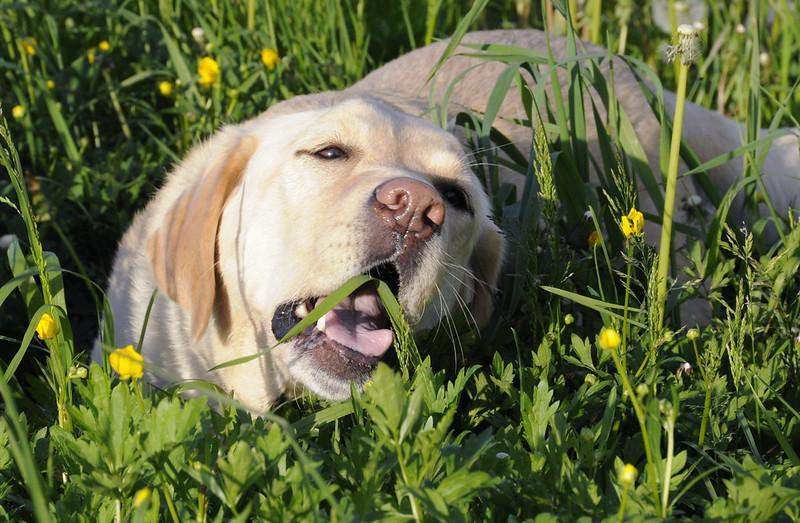
Are your four-legged pals damaging your turf? Our tips on growing grass with dogs can help!
There are two different ways in which dogs create problems for lawns. Firstly, the nitrogen in dog urine can cause certain sections of grass to green up more than the surrounding or die if there is too much nitrogen or lactic acid in the urine. Secondly, dogs are a creature of habit; they wear down paths on their favorite paths across lawns or near the lawn edges.
So, how do you grow and maintain a lawn in the presence of dogs?
You can start by planting a tougher type of grass in your yard, such as Bermuda and Fescue. However, it alone will not be enough to save your grass from dog damage. You will also have to take additional measures, such as diluting the dog’s urine before it burns the grass and training your dog to only pee in some regions of the lawn.
Continue reading to learn how to maintain a healthy lawn for you and your dogs.
Issues With Growing Grass With Dogs Around!
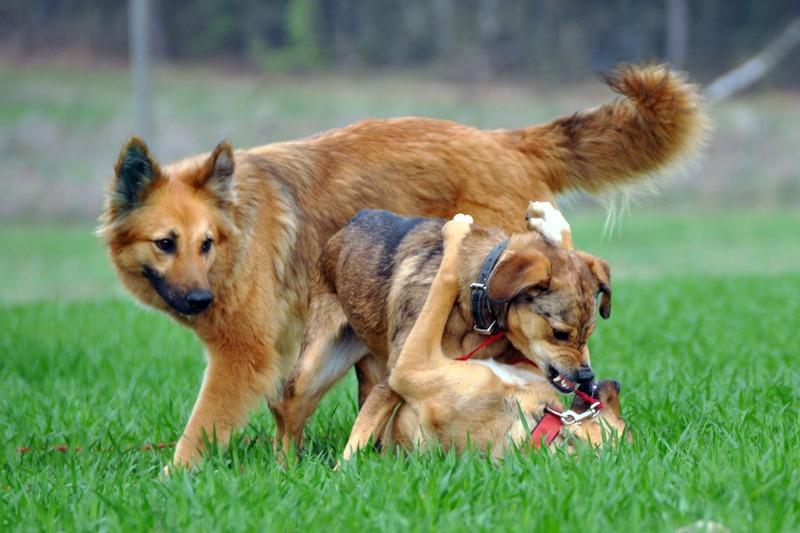
Dogs trample the grass, dig holes, and have urine all over it.
Dogs can ruin the look of your yard even if you have your lawn maintenance routine down to a tee and have used the most innovative lawn edging ideas. Dogs cause various problems for lawns, including hole burrowing, dog urine scorches, and wear and tear.
It is essential to understand why and how dogs cause damage so that you can deal with a problem in an effective manner. So, let’s dive right in!
Dogs Enjoy Grass!
Even though having dogs can make growing grass difficult at times, it is absolutely worthwhile to make an effort. They adore everything about it, from how it smells to how it feels and looks.
The lush, verdant surface their two-legged owners enjoy playing on is also a favorite of these canine creatures. The issue is that grass can’t survive all of this activity for very long, and before you realize it, you might start to notice brown patches of grass and bare patches of soil.
But, They Are Hard On The Turf!
When dogs run continuously back and forth across the yard, they wear down the grass in certain areas and eventually create paths on the lawn that are bare earth.
In addition, when they urinate, they can leave behind patches of yellowed and scorched grass, and they are also known to burrow odd holes in the soil occasionally.
Related: How To Fix A Patchy Lawn? Steps, Tips & Tools Needed | A Comprehensive Guide
Reducing Dog Damage On A Lawn

Nitrogen is the primary element responsible for the damage caused by dog pee to a lawn.
It should be clear by now that dogs love grass! They enjoy running, digging, and playing on the grass. However, in doing so, they could easily ruin a lawn. Now, obviously, you would not want to get rid of your dogs to save your yard, do you?
So, how can you save your lawn from dog damage?
Remove/Dilute Dog Poop & Pee
First things first, you should hurry up and pick up any dog droppings that you see on the grass and throw them away. Dog feces contain a high concentration of nitrogen, which can quickly burn or scorch the grass on your lawn.
In addition, once a dog has urinated, washing the area with water can assist in diluting the urine and reduce the amount of disturbance to the soil life.
Set Up A Dog Play Area
If your dog likes to decimate and dig up your grass, you can try to train him out of this behavior. Alternatively, you may consider delegating a specific area for this sake.
A lawn with random holes can look far less put together than a lawn with a designated play area that has holes in it. This location may be around the lawn corner that is difficult to see due to obstructions such as trees or bushes.
You might also want to install a modest fence around the area and a gate to keep them contained. Many backyards have playgrounds for kids, so why not have one for dogs?
Keep Your Dog Hydrated
It is also well known that the pee and feces of well-hydrated dogs contain less nitrogen and cause less harm to the grass. So, you should always make sure that your dog has access to a full bowl of fresh water at all times.
Set Up Hardscaped Paths
Similarly, hardscaped paths can assist in lessening the amount of wear and tear caused by dogs in certain sections of your lawn that see the most foot or dog traffic.
This is especially essential in regions that see a lot of precipitation since dogs damage wet lawns much more quickly than dry lawns.
Related: How To Remove Grass From A Yard To Start A New Garden? A Comprehensive Guide
Plant Tougher Types Of Grass
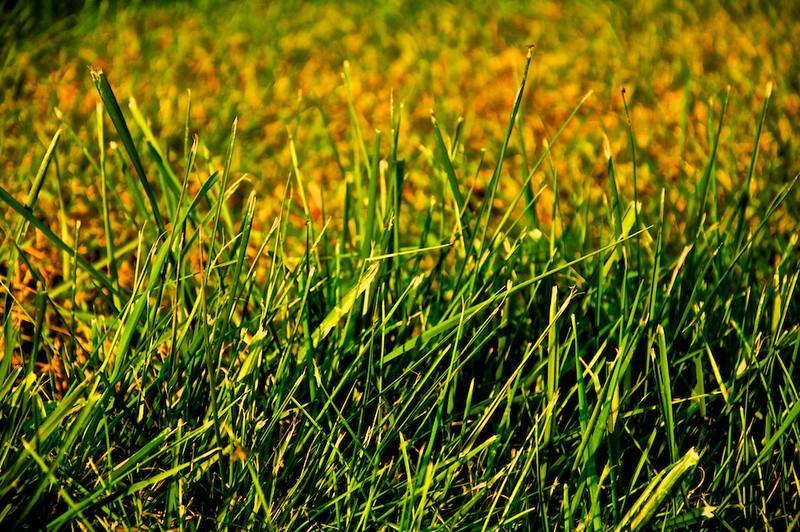
Tall fescue is a hardy turfgrass that can be used in lawns prone to dog damage.
Will your lawn be a showcase for your home or a playground for children with a swing set?
When it comes to selecting suitable grass, you need to take into consideration not only your local environment but also your way of life. So, if you care enough about your lawn, investing in high-quality, robust, long-lasting grass seed is worthwhile.
Do not put in a whole season’s worth of work only to find out that 50% of the grass seed you seeded came out to be annual filler kinds that will only last one year!
There are a number of varieties that are better able to withstand wear and tear and protect themselves from damage caused by dog urine than others, and as a result, they will maintain their lush appearance for a more extended period of time.
Some of them are Fescue grass, Bermuda grass, and Perennial ryegrass. In most cases, the best varieties of grass for withstanding excessive pet abuse are typically the same as those used on athletic fields.
Additionally, you should search for a seed that has a high potential for rapid development. This is due to the fact that seeds capable of rapid growth will also assist in the process of repairing the area as rapidly as possible.
Before making your decision, however, you should determine the soil type in the area where grass will be planted and the amount of sunlight the site receives. It is because various types of grass grow to their full potential in different kinds of environments.
Also, always seek a product that is well labeled, comes from a respected company, and has a description of the types of grass contained within the package. Here are some of the best grass seed varieties to buy for establishing a dog-friendly lawn:
| Southern Varieties | Northern Varieties |
| Bahia Grass Bermuda Grass Zoysia Grass | Kentucky Bluegrass Perennial Ryegrass Tall Fescue |
Related: Top 3 TruGreen Alternatives & Competitors | Is TruGreen Worth The Money?
How To Repair & Care For Dog-Damaged Lawns?

Do not give your dog any weird food in an effort to avoid burnt grass spots.
Lawns can become a kind of entertainment for dogs in the form of a track where they can race against one another or simply chase their tails. That is why some wear and tear is unavoidable over time, but restoring worn parts is not difficult.
Existing lawns can be easily enhanced from their present state with some basic lawn care tasks. Some of these include dethatching, core aeration, top dressing, and over-seeding with high-quality seed.
So, do not be alarmed if you see that some regions of your grass have turned brown and died. This is a common occurrence when growing grass with dogs. If you give the area a good soaking with water, you can usually get rid of these little scorched spots.
Whereas more prominent dead spots of lawn grass can be successfully resurrected with constant attention to detail. You can get started by raking the damaged or patchy areas and removing as much of the dead grass as you can. The next step is to spread a quarter of an inch of homemade compost over the area of bare soil.
Then, mix it up with the dirt all around it with a light hand. Lastly, spread topsoil over the bare spots, then scatter grass seeds over the soil to get it ready to grow.
However, it is essential to remember that you and your dog should stay off of those areas throughout the establishment phase of the new sections of grass.
And I can’t stress this enough: DO NOT give your dog any weird foods in an effort to “avoid” brown urine spots from appearing on your lawn.
That is not how it works at all.
Embrace Lawn Weeds
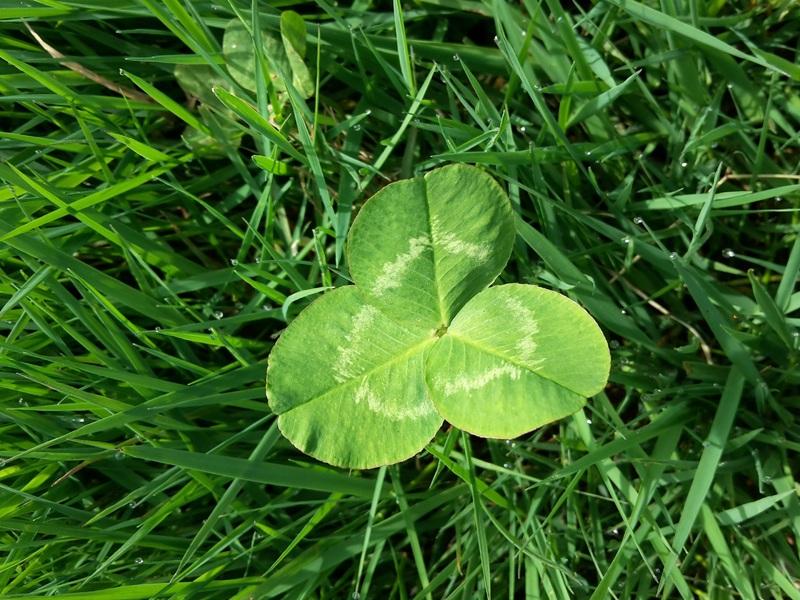
Embracing weeds like clover into your grass can help prevent lawn damage due to dog wear and tear.
When you have dogs, it may also be helpful to wave goodbye to spraying your lawn with a weed killer in favor of accepting some beneficial weeds.
Also, if fewer than 10% weeds are in your grass, you do not have a severe weed problem to warrant treatment. In a location like a backyard, it is not even fair to demand perfection levels higher than ninety percent.
Not only do weeds contribute to an increase in the garden’s overall biodiversity as one of the wildlife garden ideas, but they can also prevent your grass from being damaged by dog pee.
Clover, for example, is becoming increasingly popular on lawns. Some people who adore dogs go so far as to sow clover seed in their grass purposefully.
The clover contributes to the lawn’s ability to obtain nitrogen and adds a further layer of physical protection against everyday wear and tear effects.
Establishing A New Lawn With Dogs Around
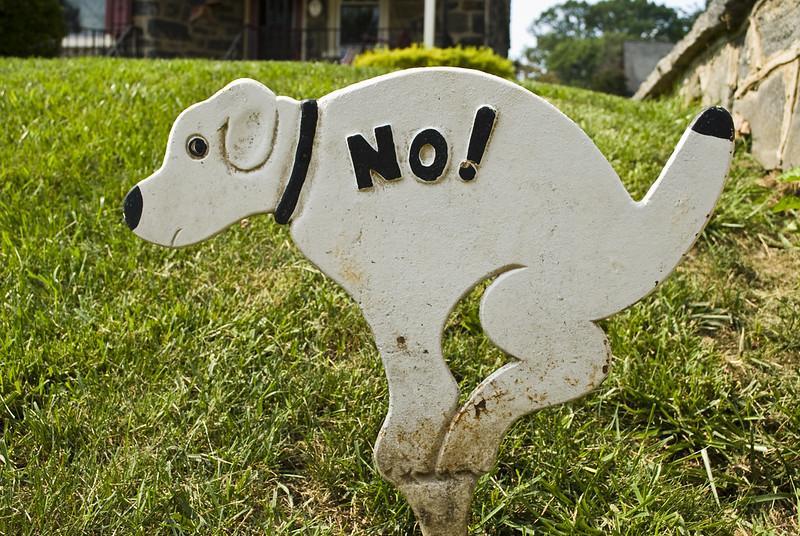
It is very unlikely that your dog will understand “keep off the grass” signs on your lawn.
At some point in their lives, dog owners may find themselves in a position where they need to start a lawn from scratch. Also, if the previous lawn is past the point of receiving light rehabilitation, it is possible to plant a new lawn on the site of the previous yard.
This typically occurs on the freshly cleared property, after significant renovations, or after extensive landscaping or hardscaping on a site. Because your dog is unlikely to understand your well-intentioned “Keep Off Grass” signs, you will need to exercise extra caution when planting grass seed in your yard if you share your home with a canine companion.
Keeping the dog off the lawn for at least six weeks following the first seed germination date is also essential. The foundational components of a dog-resistant yard are identical to those of a sports field or heavily used golf course.
We want to choose soil that has good drainage and is rich in sandy loam. For optimal growth, the grass on the lawn also needs a good deal of exposure to the sun.
However, when the outdoor grass grows, provide an alternate area of potty grass.
Your lawn will be off to a good start as a dog-friendly space if you follow the fundamentals of proper lawn care and maintain it.
Tips For Growing A Lawn With Dogs Around!
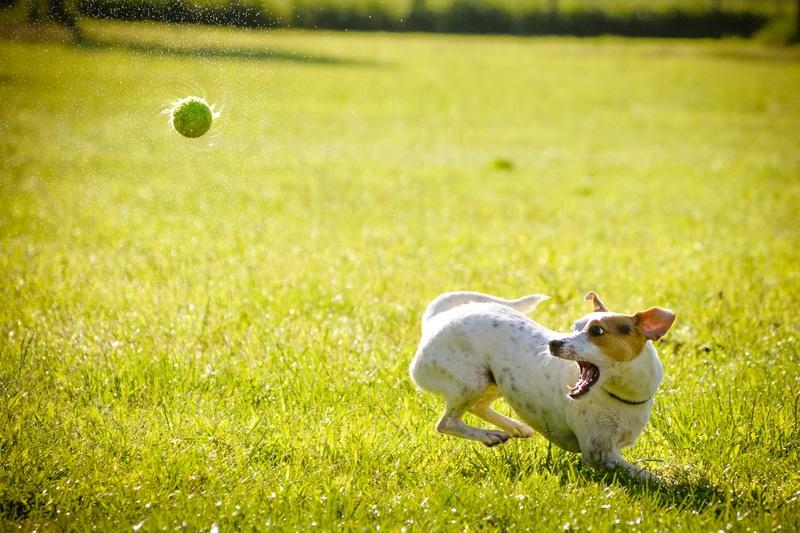
If you have dogs, ensure that the new area where you are establishing a lawn gets a lot of sunlight.
The following is an outline of the fundamental measure necessary for the proper growth and development of the grass when you have dogs around:
- Maintain a rapid rate of grass growth. Make sure that there is an adequate water supply and nitrogen for the grass to maintain a healthy growth rate.
- Mow the grass at a moderate height and provide infrequent, deep watering to promote deep root growth. The grass plants that are the healthiest have long blades and deep roots, and the grass plants that have these characteristics are the ones that are the friendliest to dogs.
- Avoid slopes. The upkeep of relatively level lawns is substantially less labor intensive compared to the maintenance of lawns with steep slopes.
- You should go for a spot that has naturally sandy soil if you can. If you have no choice but to work with clay soil, you should acquire sandy loam or high-quality topsoil and layer it at least a few inches thick on top of the clay before planting seeds.
- Establish your lawn at a site that receives a lot of sun. Plant grass in areas where it will receive plenty of sunlight. It is far more challenging to maintain a shaded grass lawn with dogs than a sunny grass lawn.
- Grow hardy types of plants. You shouldn’t try to save money by purchasing generic grass seed mixtures, plugs, or sod. Investing in grass seeds of high quality and level of resistance will produce turf grass plants that are robust and resilient.
Pet Safe Fertilizers For Lawns
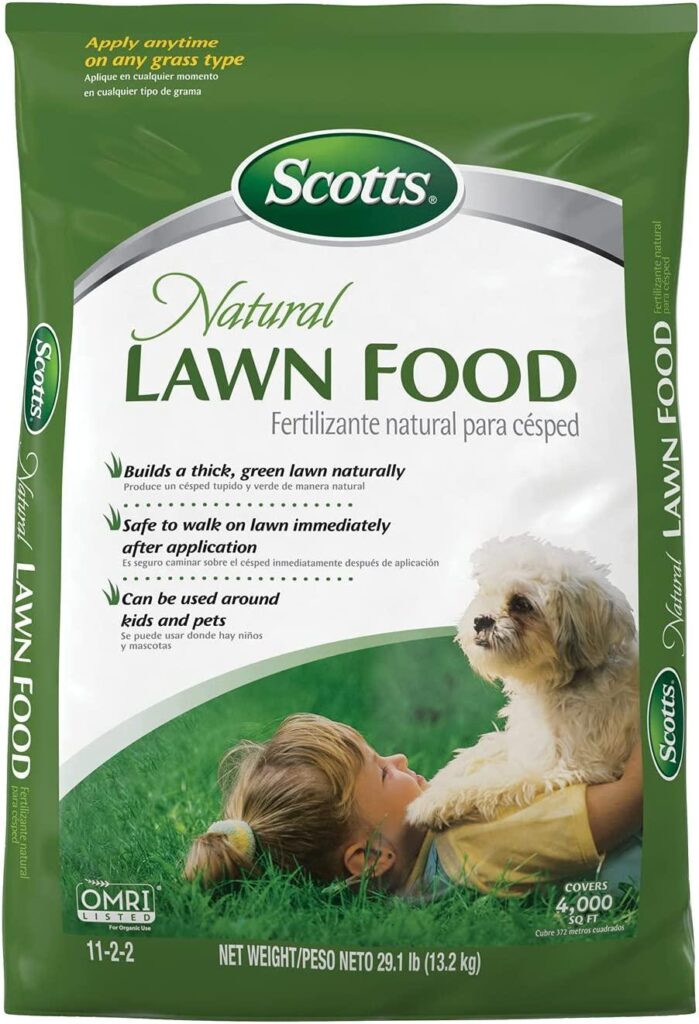
Scotts Natural Lawn Food: a pet-friendly fertilizer for home lawns.
Fertilize your grass only when it absolutely needs it, and reduce the total number of times you do it during the year. When you decide to fertilize, make sure to use a product clearly labeled as suitable for lawns on which children and pets can play.
Investing in products that are both safe and effective for use with dogs is money well spent. No “quick and easy fix” for your yard is worth putting the health and safety of our four-legged friends in danger. So, stick to organic lawn fertilizers that are safe for pets.
There are a lot of lawn fertilizer products that are explicitly indicated as being safe for pets, but there are also a lot of products that can be highly toxic to dogs. Be picky about the fertilizer you use! I recommend that you fertilize your dog-friendly lawn with Scotts Natural Lawn Food, which is suitable for use around animals.
Frequently Asked Questions (FAQs)
How Do I Get Grass To Grow With Dogs?
Select urine-resistant grass for your lawn. Avoid Kentucky bluegrass and Bermuda grass, which are particularly susceptible to dog urine.
In addition, after sowing the grass seeds, you should enclose the area and seed until the grass is fully mature, at least until the fourth or fifth mowing.
How to keep grass alive with dogs?
If you want to keep your grass alive when you have pets, keep your pet hydrated to reduce urine concentration. Placing water containers all over your house or yard is also a good idea. Additionally, watering the lawn area right away after the dog has gone potty might assist in diluting the nitrogen, reducing grass burns.
What is the best grass seed to use when you have dogs?
Bermuda, Kentucky Bluegrass, and Perennial Ryegrass are some of the best grasses for dogs. Since perennial rye germinates more quickly than most other grass varieties, it begins to grow quickly after being sown. This makes it the ideal type of grass to reseed dead patches of grass caused by digging or dog urine.
When can you let dogs on new grass?
Your dog must not step on fresh sod or grass seedlings for three to four weeks. Even a modest quantity of foot traffic can be enough to kill off a significant area of grass.
In general, the grass on your lawn should be at least three inches tall before you, and your pet is allowed to stroll about on it.
What neutralizes dog pee on grass?
Water is the only “product” that can counteract the unfavorable impact that urine has on the body. Salts such as gypsum and baking soda (sodium bicarbonate) may exacerbate the condition. You can, however, sprinkle baking soda on non-grassy surfaces. Allow it to sit for an hour to absorb the urine smell.
Sources for Further Reading
Dogs and Turfgrass Interactions | NC State Extension Publications. Retrieved 30 August 2022, from https://content.ces.ncsu.edu/dogs-and-turfgrass-interactions
Dog Urine Damage on Lawns | University of Maryland Extension. (2022). Retrieved 30 August 2022, from https://extension.umd.edu/resource/dog-urine-damage-lawns
Lawns and Dogs But Not Tomato Juice. (2022). Retrieved 30 August 2022, from https://polk.extension.wisc.edu/horticulture/seasonal-concepts/lawns-and-dogs-but-not-tomato-juice/
Dog Gone Lawn. (2019). Retrieved 30 August 2022, from https://extension.illinois.edu/blogs/good-growing/2019-08-02-dog-gone-lawn
Editor’s Recommendations
How Cold Is Too Cold To Fertilize Your Lawn? A Comprehensive Guide
Lawn Fertilizer Schedule | When To Fertilize Your Grass For The Best Results?
How To Create A Wildflower Meadow? And, Is A Wildflower Lawn Worth It?







